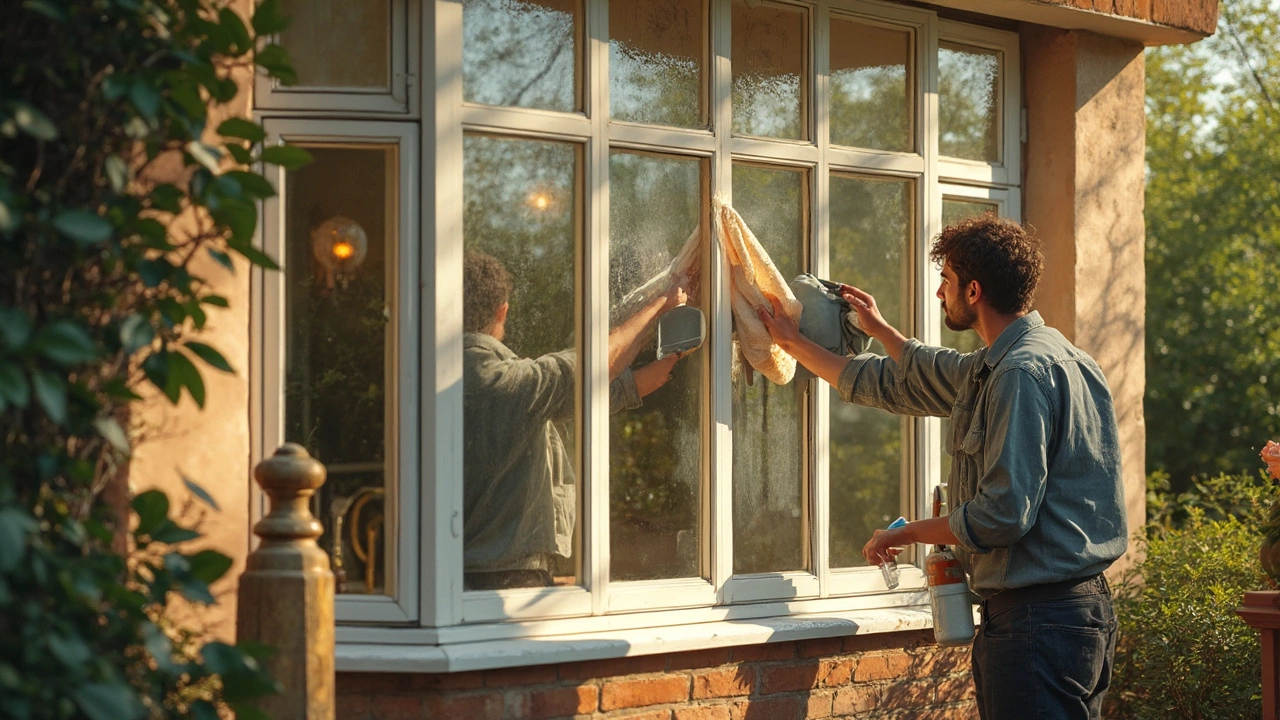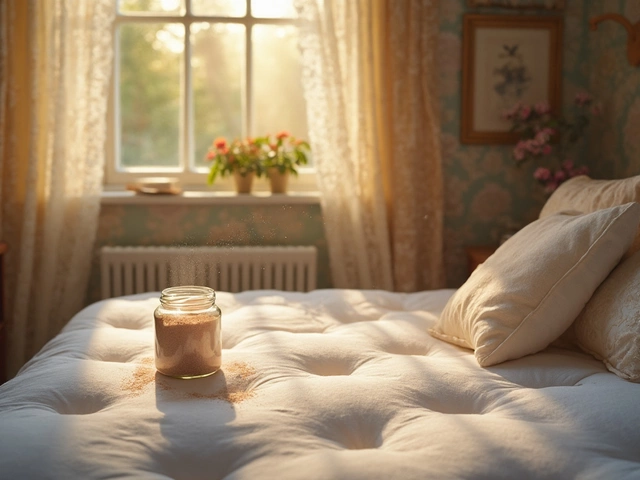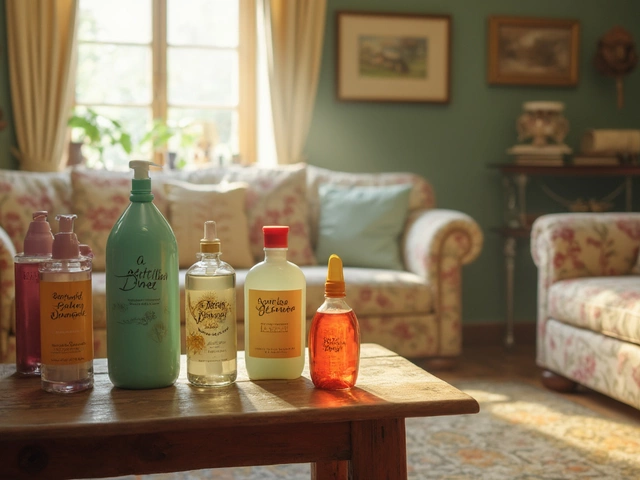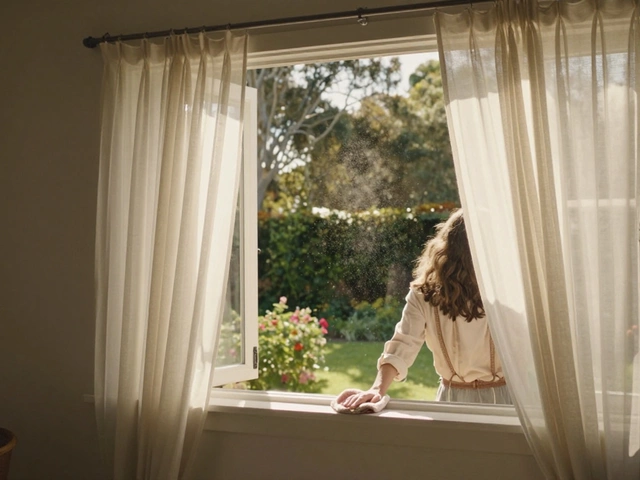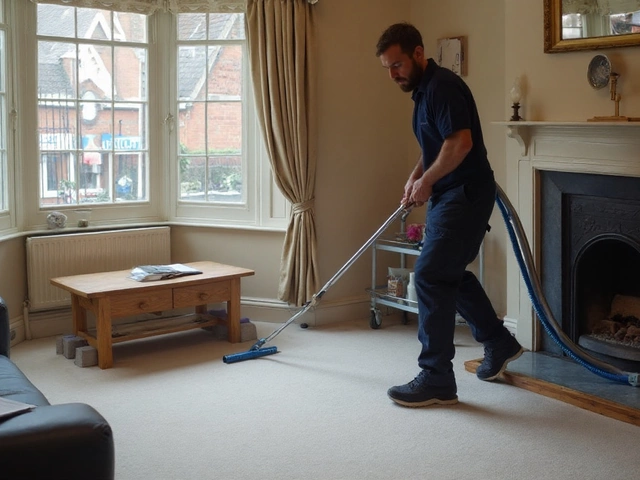Ever wondered why your windows end up streaky despite hours of scrubbing? You're definitely not alone. It’s one of the most frustrating cleaning conundrums. The culprit behind those streaks might surprise you—often, it's all about the cleaning method or the tools you're using. But don't worry; getting a streak-free shine doesn't require a degree in rocket science.
First things first, let’s talk about the wiping technique. Circular motions might seem effective, but they often spread dirt rather than removing it. Instead, try an up-and-down or side-to-side motion to efficiently whisk the grime away. Then there’s the matter of using the right cleaning solution. Sometimes, the stuff you have under the sink isn’t doing you any favors, especially if it's leaving a filmy residue.
The cloth or paper towels in your hands could also be the problem. Microfiber cloths work wonders as they hold onto dirt and grime, unlike paper products that can leave their own annoying bits behind. And though it might sound weird, sometimes the time of day makes a big difference. Windows dry faster in direct sunlight, which can lead to streaking if you’re not quick enough. A cloudy day might be just what you need for flawless windows.
- Common Cleaning Mistakes
- Choosing the Right Tools
- The Role of Cleaning Solutions
- Timing and Environmental Factors
- Expert Tips for a Streak-Free Finish
Common Cleaning Mistakes
Cleaning windows may seem straightforward, but there are common pitfalls that lead to those annoying streaks. One major mistake is using the wrong type of cleaner. Sure, window-specific products are tempting, but some store-bought solutions can cause more harm than good due to their chemical composition that leaves residues.
Also, don't overdo it with the cleaner. We tend to think more solution means more cleanliness, but the excess liquid often doesn’t get wiped away, leading to streaks. A little bit goes a long way in most cases.
Tools play a huge role too. Those handy paper towels are not your friend when it comes to clean windows. They shed fibers and add more dust than they remove. Opt for a good quality squeegee or a microfiber cloth instead.
Then there's the matter of cleaning windows at the wrong time of day. It’s easy to forget that direct sunlight can dry the cleaning solution too quickly, leaving streaks behind. Choose a cloudy day or clean during cooler times to avoid this.
Pressure is another sneaky factor. While a little elbow grease is necessary, scrubbing furiously can actually scratch glass or push dirt around instead of lifting it away. A gentle touch is often more effective.
- Not rinsing thoroughly: Leftover solution hardens into streaks.
- Ignoring window frames: Dirt from the edges can seep back during cleaning.
- Insufficient drying: A dry window is a streak-free window.
A simple window cleaning checklist can save the day. Pay attention to these tips, keep your toolkit simple, and soon you’ll have those transparent panes you've always wanted.
Choosing the Right Tools
When it comes to window cleaning, using the right tools can make a world of difference. A common mistake people make is assuming all cloths are created equal. In reality, investing in good-quality tools can save you time and effort in achieving that perfect streak-free shine.
First up, the squeegee. It’s a must-have tool for any cleaning enthusiast. A good squeegee should have a sharp rubber blade to smoothly glide over the glass, pulling away dirt and excess water without leaving marks. Scrim or lint-free cloths are also great companions, soaking up leftover droplets and ensuring no residues are left behind.
Microfiber cloths are a cleaning game-changer. These cloths are designed to trap dirt and dust instead of just pushing it around. They’re reusable, environmentally friendly, and much better than paper towels, which often leave bits stuck to your windows.
If you’re deep into DIY, consider a homemade cleaning solution. A simple mix of equal parts white vinegar and water works wonders, especially when paired with your microfiber cloths. Just be sure to store it in a spray bottle for easy application.
Now, let’s talk about ladders. If you need to tackle high windows, ensure stability and safety. A sturdy, non-slip ladder keeps you steady as you clean, so you can focus on the job without worrying about taking a spill.
Window cleaning isn't just about persistence, it’s about using smart tools and methods. Armed with these tips, you'll soon be staring out of clear, streak-free windows like a pro.

The Role of Cleaning Solutions
Picking the right cleaning solution can make or break your window cleaning efforts. Believe it or not, not all solutions are created equal, and the wrong one can leave you with those dreaded streaky windows.
First, let’s tackle a common household favorite: vinegar. It’s cheap, natural, and does a fantastic job cutting through grease and grime left by rain and pollution. Just mix equal parts vinegar and water in a spray bottle, and you’re good to go. However, if you don’t like the smell, adding a bit of lemon juice can help without sacrificing cleaning power.
If you're leaning towards commercial products, be cautious. Some advertise 'streak-free shine' but contain soaps or surfactants that leave behind a residue. Read the labels carefully. The fewer ingredients, often, the better.
Looking for something a bit more professional? Try a solution made specifically for window cleaning. These products are formulated to reduce drying time, which means fewer streaks. They usually include ammonia, which can cut through tougher stains. Just make sure you use these in a well-ventilated area due to the strong fumes.
For those of you dealing with hard water stains—a real pain on windows—grab a product with a water softener. It can help prevent mineral buildup that usually comes from sprinklers or during a rainstorm.
| Cleaning Solution | Key Benefit | Recommended Use |
|---|---|---|
| Vinegar & Water | Natural, residue-free | Everyday cleaning |
| Ammonia-based Cleaner | Fast drying, hardcore grime | Tough stains or infrequent cleaning |
| Hard Water Stain Remover | Removes mineral deposits | Post-rain or sprinkler cleanup |
Keep in mind, not every solution works for every window type. Double-check with the window manufacturer if you’re unsure, especially with tinted or specialty glass. And remember, the key to clean windows isn’t just the solution you choose but how you use it. Spray, scrub, and dry as instructed, and your windows should be streak-free in no time.
Timing and Environmental Factors
Believe it or not, when you clean your windows can be as important as how you clean them. Timing plays a key role in achieving those streak-free windows you crave. In fact, ignoring timing could leave you with streaky windows even if you're using the right techniques and products.
One of the biggest environmental factors is the sun. If you’re tackling your window cleaning during a bright, sunny day, you might be setting yourself up for disappointment. Direct sunlight causes the cleaning solution to dry too quickly, leaving streaks or spots before you've had the chance to wipe it away properly. To sidestep this, aim to clean your windows either early in the morning or late in the afternoon when the sun isn’t as strong.
Humidity levels can also throw a wrench in your cleaning plans. On really humid days, windows take longer to dry, which means cleaning solutions have more time to interact with any contaminants still present, possibly leading to streaky windows. On the flip side, extremely dry days can fast-track evaporation, making it tough to achieve that spotless finish. A moderate, cloudy day often provides the best results.
Then there’s rain, nature's very own window washer. You might think water from rain might help or harm your effort, but it usually doesn't affect well-executed cleaning jobs on sealed windows. That said, if you're using rainwater creatively, make sure the rain isn't mixing with dust or pollen or it could just add more dirt.
| Time of Day | Status |
|---|---|
| Morning | Ideal (Avoid direct sunlight) |
| Midday | Not Ideal (Sun dries solution quickly) |
| Evening | Ideal (Cooler and less sunlight) |
Remember, tackling the task under the right conditions can be the tipping point between pristine and frustratingly streaky windows. So keep an eye on the clock and the clouds when you plan your next cleaning session!
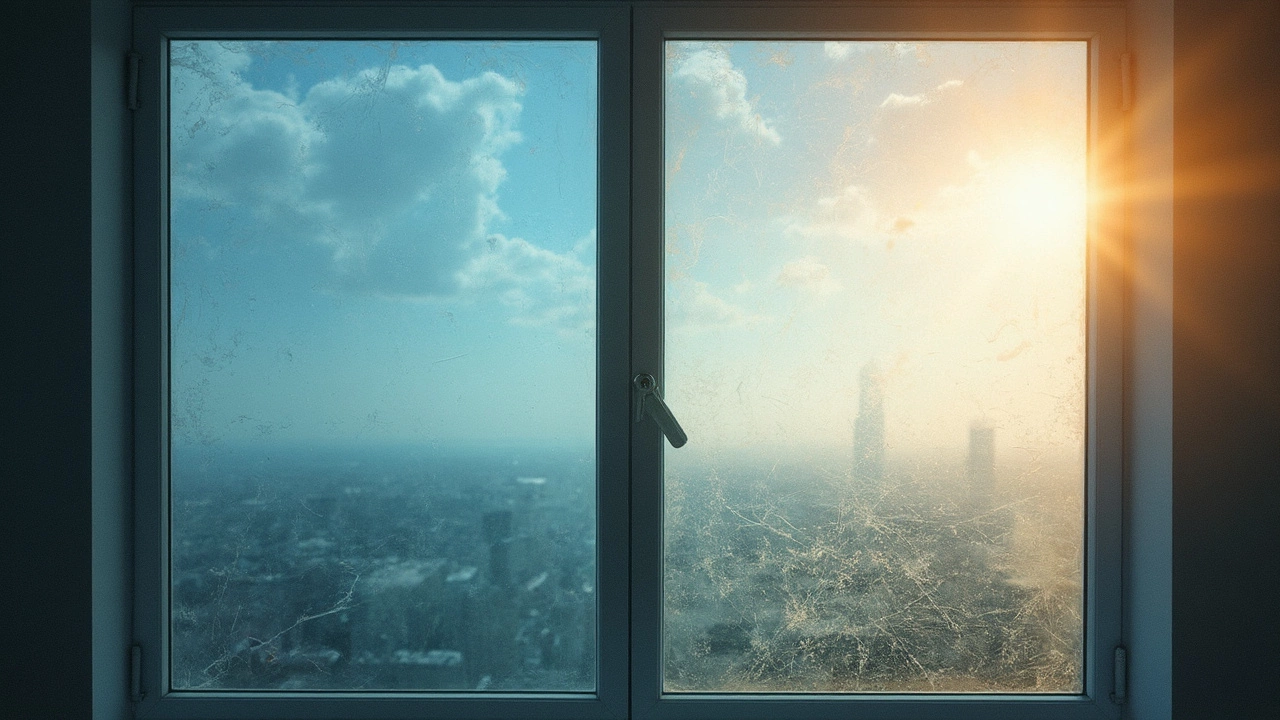
Expert Tips for a Streak-Free Finish
Achieving streak-free windows can feel like an art, but with the right tips, it's completely doable. Let’s dive into some expert advice to get those clean windows you’ve been dreaming of.
One fundamental tip is to start with clean tools. Dirty tools just spread more dirt around. Regularly wash your window cleaning cloths or squeegees to ensure they’re spotless before you begin.
“Using distilled water instead of tap water can make a big difference,” says cleaning expert Sarah McKinley. “It doesn’t contain minerals, so it won’t leave streaks behind.”
Temperature and lighting conditions are also critical. Avoid cleaning on extremely hot or sunny days. This might sound strange, but cleaner evaporates too quickly under these conditions, increasing the risk of streaks. Aim for a cloudy day, or tackle the job early in the morning or late in the evening when the sun isn’t directly hitting the glass.
Here’s a quick guide to perfect your technique:
- Start from the top and work your way down to prevent drip marks.
- Use horizontal strokes outside and vertical strokes inside to easily identify which side might still have smudges.
- Overlap your strokes slightly to ensure full coverage and prevent streaks from missed spots.
And of course, choose the right cleaner. If store-bought solutions aren’t cutting it, try a homemade mix of vinegar and water. It’s affordable and surprisingly effective for that streak-free finish.
